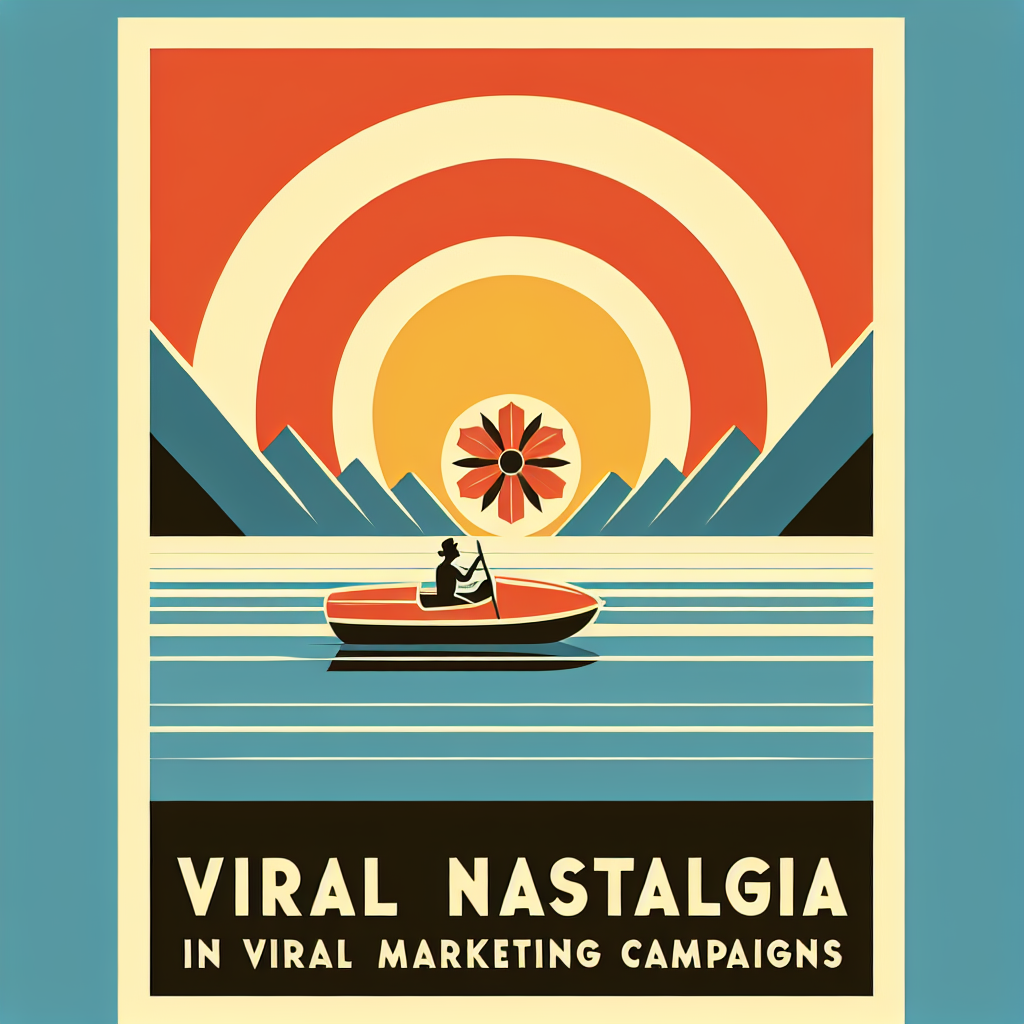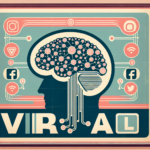“`html
Introduction
Ever wondered how a familiar song, perfume, or even an image can swiftly transport you back to the past? This is the power of nostalgia, a powerful emotion linked with our memories and experiences. But did you know that nostalgia can be a potent marketing tool?
In this blog post, we explore the fascinating world of nostalgia theory in marketing. We’ll cover how nostalgia functions, its benefits for brands, and how businesses make use of this emotional link. Are you ready to travel back in time with us and learn how to turn reminiscing into revenue? Let’s get started!
Exploring Nostalgia Theory in Marketing
What is Nostalgia Theory?
Nostalgia theory in marketing refers to the strategic use of past memories to evoke emotions in consumers. This technique leverages the sentimental longing for times gone by to create an emotional connection with a brand or product. When executed effectively, it can lead to increased customer loyalty and engagement.
Why Use Nostalgia in Marketing?
Using nostalgia in marketing can:
- Enhance emotional engagement
- Build brand loyalty
- Improve brand perception
By tapping into positive memories, brands can invoke feelings of comfort, happiness, and trust, often leading to increased consumer satisfaction and a more profound brand connection.
Methods to Implement Nostalgia Marketing
Companies can implement nostalgia marketing in several ways:
- Retro Branding: Reviving old logos or packaging to remind customers of the past.
- Classic Products: Re-releasing popular products from previous eras.
- Storytelling: Crafting campaigns that tell stories related to past events or cultural milestones.
- Music and Media References: Using songs, TV shows, or movies from past decades in advertisements.
Case Studies: Successful Nostalgia Marketing Campaigns
Some brands have successfully harnessed the power of nostalgia:
| Brand | Campaign | Outcome |
|---|---|---|
| Coca-Cola | Share a Coke | Reintroduced personalized bottles, reminiscent of sharing a Coke with friends and family. |
| Nintendo | Nintendo Classic Mini | Released a mini version of its classic gaming console, tapping into the gaming nostalgia of the ’80s and ’90s. |
These campaigns have not only rekindled fond memories but also boosted sales and media buzz.
Considerations for Nostalgia Marketing
Before employing nostalgia marketing, consider the following:
- Know Your Audience: Understand the era or memories that resonate with your target audience.
- Balance is Key: Ensure that nostalgia doesn’t overshadow your brand’s current identity.
- Authenticity Matters: Avoid contrived attempts as they can lead to skepticism.
Creating an authentic connection with your audience is vital. According to Forbes, authenticity in marketing is essential for building trust and long-term loyalty.
By considering these aspects, marketers can create effective strategies using nostalgia that foster genuine connections and drive brand success.
Examining Nostalgia Trigger Points
Identifying Potential Nostalgia Trigger Points
To effectively tap into nostalgia marketing, it’s vital to identify key trigger points that have the power to evoke strong emotions from your target audience. This could include:
- Sensory Stimuli: Fragrances, tastes, tactile sensations, sounds, and visuals from specific periods can evoke nostalgic feelings.
- Emotion-Laden Events: Significant cultural events, past fashions, popular entertainment, and former social trends can conjure emotions associated with the past.
Smart marketers harness these nostalgia trigger points to evoke sentimental memories and build strong emotional bonds with their brand.
Ingredient Branding: Using Nostalgic Elements
Ingredient branding is a strategy where a minor element or ingredient of a product becomes the hero of marketing campaigns. Ingredient branding can be enhanced by adding a nostalgic touch:
- Classic Scents: For instance, perfumers recreate classic scents that trigger emotional responses linked to times gone by.
- Traditional Ingredients: Food and beverage brands can highlight traditional ingredients to take consumers on a nostalgia-trip, reminding them of flavors they enjoyed in the past.
Pitfalls of Nostalgia Marketing
Over-Dependence on Nostalgia
While nostalgia can be a potent tool, over-reliance on this strategy may pose challenges. Over-use can cause:
- Outdated Perception: Constant references to the past can make your brand appear outdated, making it difficult to attract new customers.
- Lack of Innovation: Relying heavily on past successes may signal a lack of fresh thinking and innovation to consumers.
Hyper-Specific Nostalgia
Using nostalgia that is too specific to a certain group or time period can alienate your audience. Balance your approach to ensure broad appeal:
- General Era Appeal: Avoid hyper-targeting a specific time. Instead, choose broader time periods for maximum effect.
- Careful Selection: Not all past cultural references are viewed positively. Ensure that the examples you choose are universally liked and uncontroversial.
Nostalgia in Digital Marketing
Using Nostalgia on Social Media
To reach younger audiences, brands can use nostalgia on social media platforms:
- Hashtags: Employing hashtags such as #ThrowbackThursday or #FlashbackFriday can be a fun and easy way to introduce a nostalgic element.
- Contests: Engage users with contests that require them to share their nostalgic memories or experiences associated with your brand.
Nostalgia in Email Marketing
By blending nostalgia into emails, brands can increase open rates and engagement:
- Subject Lines: Use catchy nostalgic subject lines to increase email open rates.
- Visually Stimulating Emails: Utilize visuals from bygone times in your emails to evoke nostalgic feelings.
As Search Engine Journal points out, nostalgic marketing, if implemented wisely, can help businesses to stand out and create a deeper connect with their customers.
The Power of Nostalgia in Marketing
Emphasizing the Emotional Connection
Nostalgia is a potent marketing tool because it taps directly into consumers’ emotions. This strategy is powerful as it evokes a warm, comforting feeling of familiarity. When brands use nostalgia, they create a personal connection by eliciting memories that often carry deep emotional significance for the audience. This emotional connection can enhance customer loyalty as people are naturally drawn to feelings of happiness and familiarity that nostalgic elements can inspire.
Benefits of Nostalgia Marketing
Incorporating nostalgia into marketing strategies offers several advantages beyond those previously mentioned:
- Difficulty of Imitation: The personal and intangible nature of nostalgia makes it a unique differentiator that competitors can’t easily replicate.
- Cross-Generational Appeal: While targeting a particular era can focus on specific demographics, nostalgia can also bridge generational gaps, especially through shared cultural icons or repeated trends that reoccur over decades.
Nostalgia and Consumer Behavior
Understanding the influence of nostalgia on consumer behavior is crucial in crafting effective campaigns. Nostalgia often leads to:
- Impulse Buying: The positive emotions invoked by nostalgic marketing can prompt consumers to make impulsive purchase decisions.
- Customer Advocacy: Nostalgia can turn customers into brand advocates, as they are more likely to share nostalgic content or experiences with friends and family.
Nostalgia in Content Marketing
Storytelling Techniques
Storytelling remains a powerful tool in nostalgia marketing. By weaving narratives that incorporate nostalgic elements, brands can captivate their audience.
- Hero’s Narratives: Craft stories where the customer is positioned as the main character in a nostalgic narrative arc, drawing parallels between personal experiences and the brand’s story.
- Relatable Characters: Develop characters that embody nostalgic traits or experiences, making it easier for audiences to project their memories onto them.
Visual Appeal in Marketing
Visual elements are key to triggering nostalgic memories. Brands can use:
- Retro Design Elements: Incorporate fonts, color schemes, and design styles that recall certain eras, appealing directly to consumers’ memories.
- Vintage Photography: Using images that feature older technologies, fashion, or settings can instantly transport audiences back in time.
By highlighting the ability of nostalgia to create strong emotional connections and influence consumer behavior, marketers can leverage this potent tool to enhance brand loyalty and drive engagement.
Tapping into Nostalgia for Viral Marketing Success
Driving Virality with Nostalgia
Nostalgia can be a powerful force for making marketing campaigns viral. Here’s how tapping into nostalgic themes can create shareable content:
- Shared Cultural Touchstones: Using elements from shared past experiences, like popular TV shows, music, or toys, can resonate widely, encouraging people to engage and share.
- Emotion-Driven Sharing: Nostalgia provokes strong emotions, which can drive users to share content with their social circles to rediscover and relive those shared memories together.
- Interactive Content: Games, quizzes, or polls based on nostalgic content can entice users to interact deeply with a campaign, often sharing their results on social media.
Best Practices for Nostalgic Viral Content
Creating viral marketing content through nostalgia requires keen insight and strategy. Here are some best practices:
- Find the Right Era: Ensure the era or reference you choose is relevant to the main demographic groups you’re targeting and widely recognized.
- Engage Creatively: Develop engaging formats like meme formats, videos, or infographics that can highlight nostalgic references creatively and memorably.
- Foster Community Memories: Encourage people to share their own experiences and memories associated with the times or trends you’re spotlighting.
Examples of Successful Nostalgia-Fueled Viral Campaigns
Some of the most memorable marketing campaigns have harnessed nostalgia effectively to achieve virality:
| Brand | Campaign | Viral Element |
|---|---|---|
| Spotify | Your Year Wrapped | Uses personal nostalgic music journeys, prompting massive sharing each year-end. |
| LEGO | LEGO Ideas | Allows fans to recreate nostalgic movie scenes or vintage designs, engaging communities around shared memories. |
Challenges and Mitigation in Nostalgia Marketing
While nostalgia can be effective for going viral, it has its challenges:
- Polarizing Memories: Not all consumers will view certain cultural references positively. Always conduct thorough research to ensure chosen nostalgic elements are broadly positive.
- Update with Modern Twists: Balance nostalgia with current trends to maintain relevance and avoid seeming outdated. Incorporate modern influences into nostalgic themes to refresh their appeal.
In conclusion, nostalgia in viral marketing must be tactfully employed. By understanding your audience’s past and crafting campaigns that connect emotionally, brands can drive engagement and create memorable, share-worthy content. According to Inc.com, nostalgia can increase the sense of sharing and content engagement, turning a campaign into a viral success.
Conclusions on Nostalgia Theory in Marketing
Nostalgia theory in marketing refers to the strategic and conscious activation of past memories, resulting in emotional engagement and increased brand loyalty. From retro branding to social media engagements, tactics abound for stimulating nostalgia in consumers. However, it’s essential to use nostalgia in a balanced way, complementing it with current brand identity and avoiding overuse. With comprehensive understanding of its audience, along with suitable nostalgia trigger points, a brand can foster authentic connections, driving success in a wide array of marketing methods, including content, digital, and viral marketing.
Frequently Asked Questions – FAQs
What is Nostalgia Theory in marketing?
Nostalgia Theory refers to the usage of past experiences and memories to foster emotional connections and engagement with consumers. This, when effectively used, can lead to increased customer loyalty.
Why is it important to use Nostalgia in marketing?
Using nostalgia in marketing can emotionally engage consumers, thereby building brand loyalty and improving brand perception. It also helps in invoking feelings of comfort, happiness, and trust among the consumers.
What are some methods to implement Nostalgia Marketing?
Some methods include retro branding, reintroducing classic products, crafting nostalgic storytelling campaigns, and using past music and media references in advertisements.
Are there any downsides to Nostalgia Marketing?
Yes, over-reliance or misuse of nostalgia in marketing might make the brand appear outdated or lacking in innovation. Nostalgia that’s too specific to a certain group or era might also alienate certain audience members.
Can Nostalgia be incorporated in digital marketing?
Yes, nostalgia can be effectively used in digital marketing. Using appropriate hashtags or hosting contests on social media or using nostalgic visuals in emails can increase engagement and foster customer loyalty.
“`






